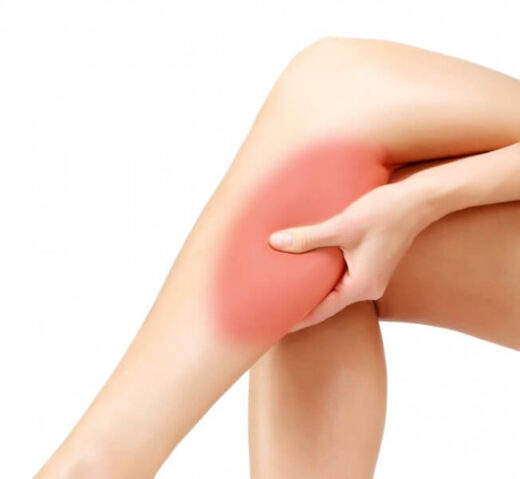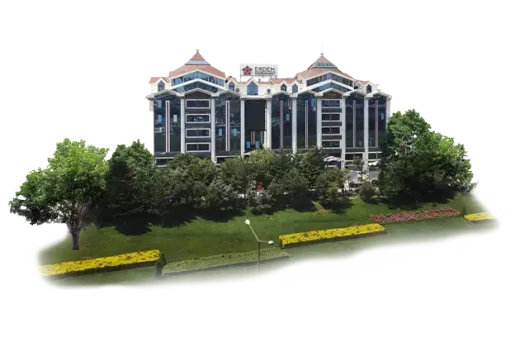A sudden, stabbing pain that stops you in your tracks. Your calf locks up, your toes curl uncontrollably, or your thigh tightens into a rock-hard knot. These are all classic signs of a muscle cramp, a condition that most people experience at some point in their lives, yet few fully understand.
While usually harmless, muscle cramps can range from mildly uncomfortable to excruciatingly painful. They often strike at night, during exercise, or more frequently in the hot summer months.
So what exactly causes muscle cramps, and more importantly how can you prevent them? This comprehensive guide explores the physiology, triggers, seasonal patterns, and science-backed solutions to reduce your risk and improve your quality of life.

What Are Muscle Cramps?
Muscle cramps are involuntary contractions of one or more muscles that occur suddenly and do not relax on their own. They often affect the calves, thighs, feet, or hands, but can strike almost any muscle in the body.
A typical cramp lasts from a few seconds to several minutes. Afterward, the affected muscle may feel sore, tight, or tender to the touch.
What Causes Muscle Cramps?
While muscle cramps are common, their exact cause isn’t always clear. However, several factors are known to increase the risk:
1. Dehydration
One of the most well-established causes of muscle cramps is loss of fluids. When the body lacks sufficient water, muscle cells become more irritable and prone to involuntary contractions.
2. Electrolyte Imbalance
Minerals like sodium, potassium, magnesium, and calcium are essential for muscle contraction and relaxation. A deficiency or imbalance in these electrolytes disrupts neuromuscular function, increasing the likelihood of cramps.
3. Overexertion or Fatigue
Muscles that are overused, especially during high-intensity or prolonged exercise, can cramp from fatigue and lactic acid buildup.
4. Poor Circulation
Reduced blood flow to a muscle due to vascular issues or sitting in awkward positions can cause cramping, particularly in the legs.
5. Nerve Compression
Conditions like spinal stenosis or nerve root irritation can lead to leg cramps, especially when walking or standing for extended periods.
6. Medication Side Effects
Certain medications, including diuretics, statins, and beta-agonists, have been linked to increased incidence of muscle cramps.
Which Mineral Deficiencies Are Linked to Cramps?
Electrolytes play a central role in nerve transmission and muscle function. When they are out of balance, cramps become more frequent.
- Magnesium: Perhaps the most common mineral associated with cramps. Deficiency can cause neuromuscular hyperexcitability, especially in older adults.
- Potassium: Helps regulate fluid balance and muscle contractions.
- Calcium: Required for proper nerve signaling and muscle response.
- Sodium: Essential for hydration and transmission of nerve impulses.
If you’re sweating heavily especially in hot conditions you’re likely losing all of these minerals, making supplementation or a mineral-rich diet critical.
Why Are Muscle Cramps More Common in Summer?
Cramps are more frequent during hot weather due to increased fluid and electrolyte loss through sweat. This is especially true for athletes or physically active individuals who:
- Exercise outdoors during peak sun hours
- Don’t rehydrate properly with electrolyte-rich fluids
- Wear heavy gear or clothing that increases body temperature
- Skip pre- and post-workout stretching routines
Additionally, the vasodilation (widening of blood vessels) that occurs in heat may also affect muscle control and increase cramp risk.
How to Prevent Muscle Cramps
1. Stay Well-Hydrated
Drink at least 2–3 liters of water per day, and more if you’re active or in a hot climate. Include electrolyte drinks after intense workouts or heavy sweating.
2. Eat a Mineral-Rich Diet
Consume foods high in magnesium, potassium, and calcium:
- Magnesium: Dark leafy greens, almonds, pumpkin seeds, legumes
- Potassium: Bananas, sweet potatoes, avocados, spinach
- Calcium: Yogurt, cheese, sardines, fortified plant milks
3. Warm Up and Stretch
Always begin workouts with a warm-up and finish with gentle static stretching. Stretching improves flexibility and circulation, reducing cramp risk.
4. Avoid Overexertion
If you’re doing repetitive or high-load exercises, gradually increase intensity and listen to your body. Fatigued muscles are more prone to cramping.
5. Correct Your Posture
Sitting or standing with poor posture can compress nerves or reduce blood flow, triggering cramps especially in the feet and calves.
What Exercises Can Help Prevent Cramps?
Regular mobility and flexibility exercises keep your muscles supple and less prone to spasms.
Recommended Exercises:
- Calf Stretch (Wall or Step Stretch)
- Hamstring Stretch (Seated or Standing)
- Quadriceps Stretch (Standing Pull)
- Foot and Toe Flexes
- Yoga Poses like Downward Dog, Pigeon, and Child’s Pose
Foam rolling and myofascial release can also relieve muscle tension and prevent the buildup of trigger points that cause cramps.
What to Do About Nighttime Leg Cramps?
Night cramps especially in the calves or feet are very common, particularly in older adults or pregnant individuals. They often happen during deep sleep and can be disruptive.
Prevention Tips:
- Stretch before bed (especially calves and hamstrings)
- Drink a glass of water with a pinch of sea salt to hydrate overnight
- Take a magnesium supplement before sleep (consult your doctor first)
- Keep legs slightly elevated or use a pillow under your knees
If a cramp strikes, immediately:
- Flex your foot upward (heel down, toes up)
- Massage the muscle gently
- Apply a warm compress or stand on the affected leg to relax the muscle
When Should You See a Doctor?
While most muscle cramps are benign, persistent or severe cramps may signal underlying issues such as:
- Nerve damage or neuropathy
- Thyroid or kidney disorders
- Circulatory problems
- Medication-induced electrolyte imbalances
Seek medical attention if:
- Cramps occur daily or frequently without cause
- They are accompanied by swelling, redness, or numbness
- You experience muscle weakness or fatigue between episodes
Expert Diagnosis and Mineral Analysis at Erdem Hospital

If chronic muscle cramps are disrupting your sleep, workouts, or daily life, don’t ignore the signs. At Erdem Hospital in Istanbul, internal medicine specialists and neurologists offer comprehensive evaluations to uncover the underlying causes of persistent cramping. Through advanced bloodwork, mineral panels, nerve function tests, and dietary consultations, Erdem Hospital builds a tailored treatment plan whether the root cause is electrolyte deficiency, nerve compression, or circulatory dysfunction. Backed by over 37 years of experience and a holistic care model, Erdem Hospital helps you move freely and sleep peacefully without the sudden sting of a cramp.